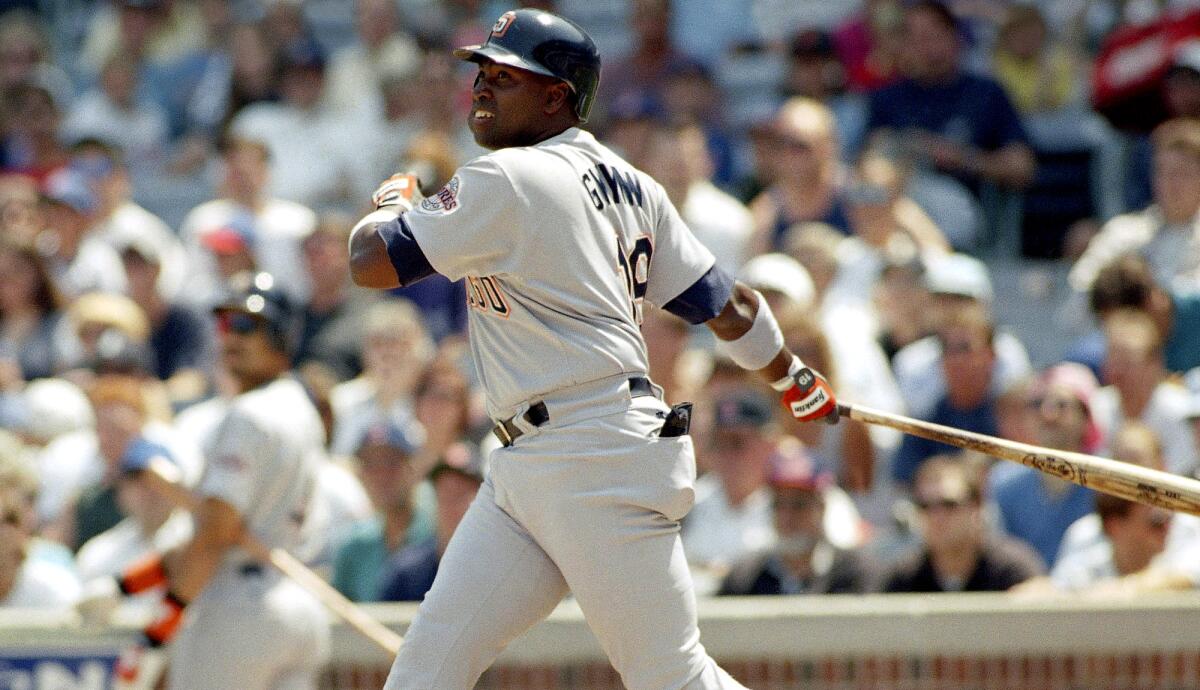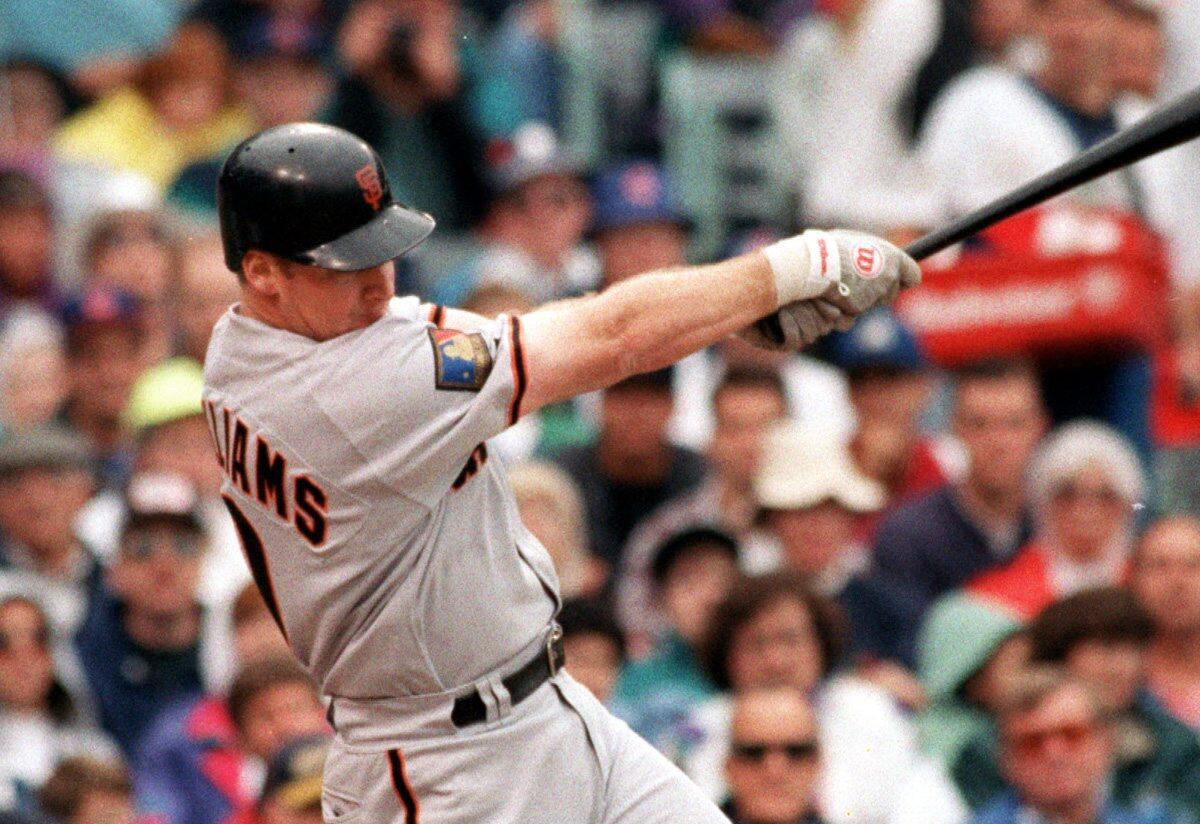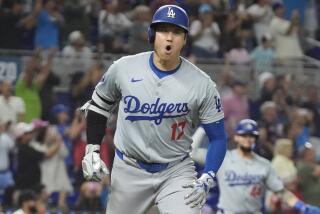MLB 1994 strike: Revered milestones eluded Tony Gwynn and Matt Williams

Where regret should linger, only indifference resides. These days, reliving the 1994 season makes Matt Williams feel simply one way.
Old.
“It was a loooong time ago, man, a long time,” Williams said. “I can’t believe it’s been 25 years. That’s crazy.”
In a season lost to history, the stoic slugger was denied a chance to make some of his own, having hit 43 home runs in 115 games with the San Francisco Giants. Sweet-swinging San Diego Padres outfielder Tony Gwynn had a similar circumstance.
Both men were chasing revered milestones, Williams on track to become the third player to hit 60 home runs or more in a season and Gwynn closing in on a .400 batting average, when a players strike brought the campaign to a screeching, and eventually permanent, halt Aug. 11.
But in the moment, neither player was hung up on glory. They were consumed by goals larger than themselves. They cared more about their teams, and their sport.
“’94, it wasn’t about a personal feeling so much as it was about a group,” Williams said. “A strong, united group that wanted to push our game forward.”
::
A creature of habit, Jim Riggleman poured himself coffee and scratched out some simple math on a napkin in his Houston hotel room.
The Padres manager usually put pen to paper to jot down lineups or tweak the rotation. But on Aug. 9, 1994, Riggleman had a different dilemma to solve.
How Gwynn could hit .400.
The Padres, reeling from a fire sale the previous offseason, weren’t serious contenders that year. Still, entering the final series before the strike, Gwynn still had a shot at the threshold.

25th anniversary of baseball strike
A look back at the 1994 major league strike.
On June 8, he was hitting .376. Then he found a way to raise it. Over the next two months, he went 85 for 209 (.407), using a steady string of line drives and well-placed grounders to bump his average to .392. During a trip to Cincinnati, teammate and current Angels manager Brad Ausmus asked Reds infielder Barry Larkin why everything Gwynn hit seemed to trickle into the outfield.
“His bat was so late coming through the zone that [infielders] would be a half-step short getting to those balls that they would field,” Ausmus said. “He just could wait so long because he had quick hands, great eyes. But it seemed like everything he hit, every time he touched the ball, it seemed to be a hit.”
With only three games against the Houston Astros before the strike, Gwynn needed to go nine for 12 or better. He began the first night with a double in the first inning and single in the sixth.
“He was so hot,” Riggleman said, “you knew it was possible.”
Gwynn batted in the eighth with runners on first base and second and no outs. The score was tied 2-2. Rookie left-hander Mike Hampton was on the mound. His focus fixated on history, Riggleman was evaluating the matchup in his head. That’s when Gwynn walked up to him with a question.
“Do you want me to bunt them over?” Gwynn said.
Riggleman was floored. Not since Ted Williams in 1941 had a player hit .400. In all the time since, only Rod Carew (.388 in 1977) and George Brett (.390 in 1980) had come close.
“He was willing to sacrifice that opportunity to do what was best for the team,” Riggleman said. “For a team that was probably 30 games out of first place.”
Riggleman waved Gwynn off and insisted he swing. He grounded into a double play. Still, the runner at second base advanced to third and later scored the eventual winning run in a game that didn’t really mattered.
Twenty-five years later, Riggleman doesn’t remember many of the hits, or exactly what helped the Hall of Famer find another gear. Had the season continued, Riggleman believes Gwynn would’ve reached the milestone. Gwynn, who died in 2014, thought so too.
“Tony and I spent a lot of offseasons playing golf together,” Ausmus said. “He always thought he could have hit .400 if we’d have played it out.”
But at the time, Gwynn didn’t care. He wanted the Padres to win.
“That always resonated with me,” Riggleman said. “How unselfish he was.”
::
Matt Williams can live with 1994. It’s the 1995 season he bemoans the most. That summer, he was setting career highs in batting average and on-base-plus-slugging percentage before a broken foot sidetracked his season.
The strike-shortened year of 1994, by comparison, was more palatable.
His batting average hovered around .260. But with a crouched, compact swing, he was cracking home runs at a record-setting rate. Two on opening day. Ten in April. By the All-Star break, he had 33. Entering August, he was up to 40.
“It wasn’t like I was lighting the world on fire,” he said. “It was just, if I did hit one, it cleared the fence. I didn’t really think about the magnitude of any of it at the time. I was just playing.”

His last long ball came on the penultimate day of play, a low fastball that flew into the center-field basket at Wrigley Field. He was on pace to hit 62 home runs. Roger Maris held the record of 61 in 1961 and Babe Ruth had hit 60 in 1927. But, with the strike looming, Williams never believed he’d get the chance to get there.
“The talk about that came years later, the ‘what-ifs,’” Williams said. “But I wasn’t concerned about it then and I’m not concerned about it now and haven’t been in between.”
Like Gwynn, his focus was elsewhere. Williams was acutely aware of the labor strife –- centered on the owners’ desire for a salary cap, the potential elimination of salary arbitration, and restrictive rules pertaining to free agency.
Williams walked away from the season without hesitation. A quarter of a century of reflection hasn’t changed his outlook.
“That season,” he said. “I don’t have a whole lot of emotion about one way or another.”
He isn’t often asked about 1994. His blistering number of long balls –- for comparison, no one in the sport this year even has 40 as of August 11 -– became no more than a footnote in history.
He can live without the personal adulation. He might have been robbed of a record but views the strike as a sacrifice worth making, the only way baseball could move forward.
“It took a long time for fans to accept again and things of that nature,” Williams said. “But as it turns out, I think we accomplished the goal of moving the game along, making it popular again, doing the things we wanted to accomplish.”
More to Read
Go beyond the scoreboard
Get the latest on L.A.'s teams in the daily Sports Report newsletter.
You may occasionally receive promotional content from the Los Angeles Times.











